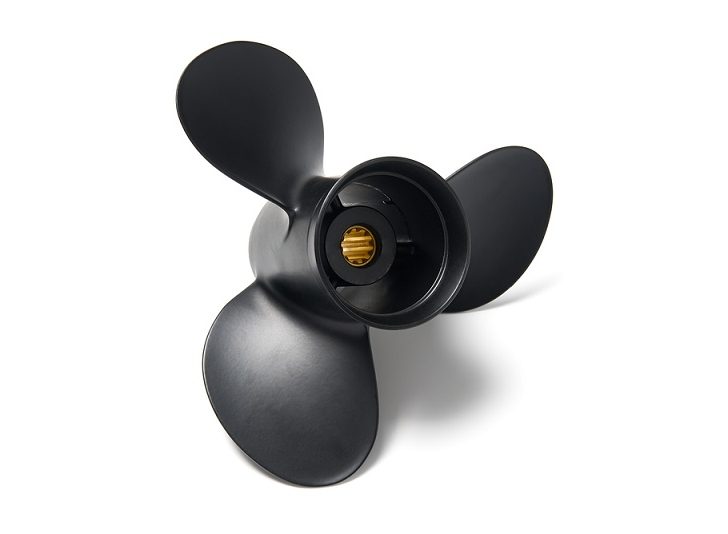There are three primary types of boat engines: outboard, inboard, and sterndrive motors. A fourth and much more portable type, the trolling motor, will not be discussed in this article.
With so many different boat and engine types, you may not be surprised to learn that there are a wide variety of propellers that can be paired with these engines.
So, what are the different types of boat propellers? How can you determine which one is best for your specific motor?
Keep reading to learn all you need to know about boat propellers!
Table of Contents
By Style
Boat propellers are divided into different types based on three specific categories: the prop style, number of blades, and materials used to make it. Let’s start by taking a look at the two main styles of boat propeller.
1. Fixed-Pitch Props
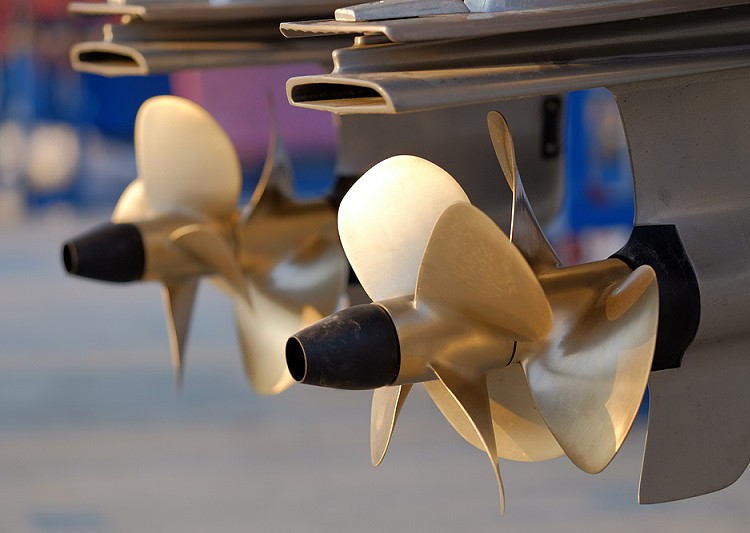
Pitch refers to the distance the prop moves in a single rotation. As Discover Boating puts it, “Propeller pitch is the distance the propeller would move forward in one rotation if it were moving through a soft solid—think of a screw being turned into wood.”
In a fixed-pitch propeller, the blades and other dimensions of the prop are firmly set, or fixed, in place–they cannot be adjusted.
Fixed-pitched propellers are the most common type of boat prop. They are sturdy, damage-resistant, and relatively inexpensive.
Since they are fixed in place, these types of propellers don’t require a hydraulic system or other mechanical setup to work. They are attached directly to the shaft, which makes them easy to install and use.
Fixed-pitch blades are some of the most durable, they are also easy to repair if they do sustain damage.
The main drawback of fixed-pitch props is that they aren’t as maneuverable as some other propeller types. If you are a professional or competitive boater, you may need something a little more flexible, such as a controllable-pitch propeller.
2. Controllable-Pitch Props
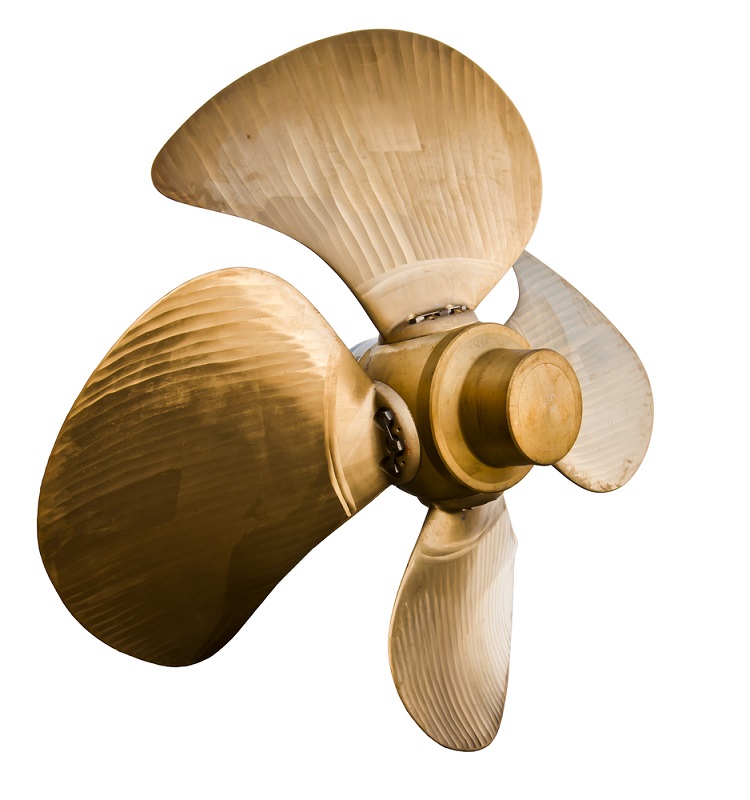
As the name suggests, controllable-pitch propellers can be controlled and adjusted based on changing water and weather conditions.
Adjusting these types of propellers changes their angle, which produces varying amounts of power. These controls are made possible by hydraulic components on the shaft.
Controllable-pitch propellers are most often used with motors that have a fixed speed or those used by professional boaters.
They are a good choice for boats that will be carrying a wide variety of loads, as the prop angle can be adjusted to maintain a consistent speed no matter the weight being carried.
They are highly fuel-efficient since they can be adapted to different environmental and load conditions.
Despite all of their benefits, controllable-pitch propellers have some drawbacks as well. They are challenging and costly, both to install and to repair. They also can produce pollution if the hydraulic oil leaks into the water.
By Blade Number
Propellers are sometimes divided into types by the number of blades they have. In this section, we’ll take a look at 3- through 6-bladed propellers.
Though 2-bladed propellers are sometimes used as well, they are primarily limited to trolling motors and small secondary motors on sailboats.
3. 3-Bladed Props
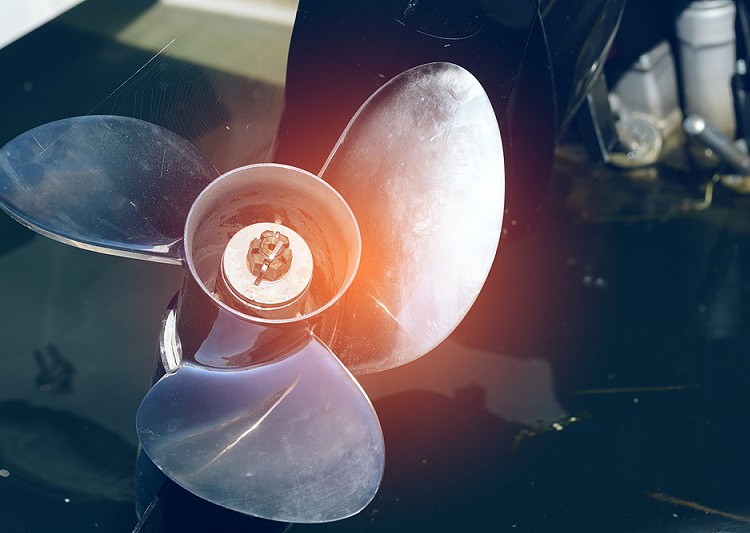
Three-bladed propellers are some of the most common props for all three of the main boat engine types. They are generally less expensive than other types of propellers, which may contribute to their popularity.
Three-bladed propellers are highly efficient because the fewer the blades, the less resistance and drag that is created.
That said, a greater number of blades provide a smoother ride, so 3-bladed propellers are not as smooth as the other props discussed in this section.
Despite this, they can still offer a comfortable enough ride while saving you money on gas and maintenance costs.
4. 4-Bladed Props
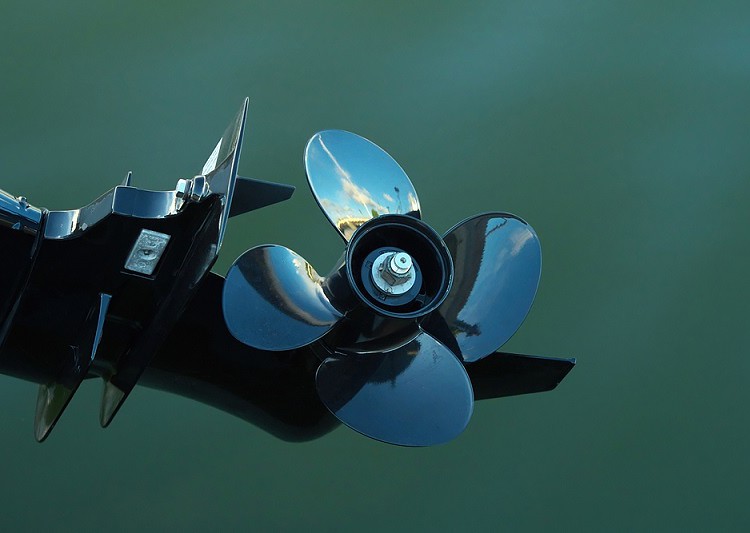
4-bladed propellers are another popular choice, especially if you have a larger engine on a heavier boat.
These props are a little smoother than 3-bladed propellers, and the increased surface area provided by a fourth blade helps them to accelerate better and supply additional lift.
Of course, the fourth blade also increases the resistance, which makes them a little less efficient than 3-bladed props.
That said, if you have a large boat, the benefits definitely outweigh the drawbacks of using a 4-bladed prop over a 3-bladed one.
5. 5-Bladed Props

5-bladed propellers are not quite as common as 3- and 4-bladed ones, but they are useful for large boats, heavy loads, and uncertain water conditions.
They provide an even smoother ride than 3- and 4-bladed props, as they cut like butter even through choppy waters. They cut down on vibrations in the boat and allow for a more comfortable boating experience.
Despite the smoothness of the ride, 5-bladed propellers experience more resistance thanks to their increased surface area; thus, they are less fuel-efficient.
6. 6-Bladed Props
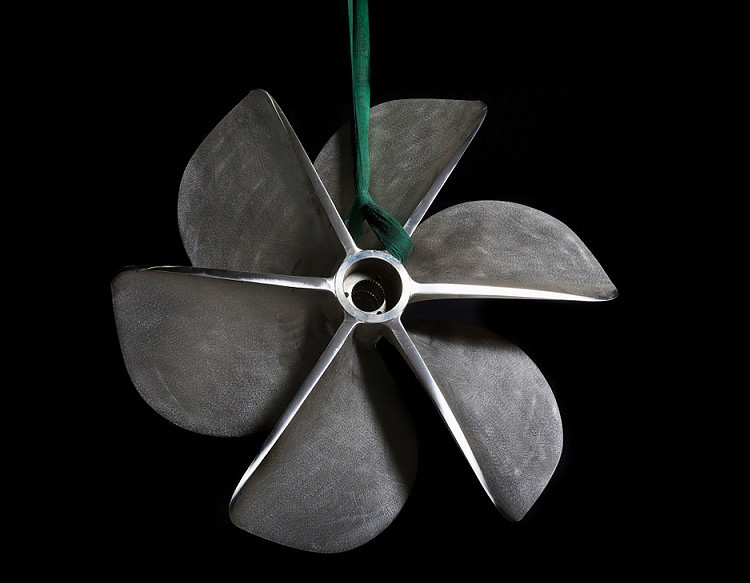
6-bladed propellers are the least common type in terms of blade number, and they are also the most expensive.
As you might imagine, 6-bladed propellers offer the smoothest ride of all, as they significantly cut down on the number of vibrations you feel.
They are also some of the most reliable props on the market, as they cut through even the choppiest waters with ease.
6-bladed props are the least fuel efficient and experience the greatest amount of drag, but they are an excellent choice for professional boaters or those who frequently go out in challenging water conditions.
By Material
Finally, propellers are often classified by the materials used in their construction. The most common materials used for boat props are aluminum, stainless steel, bronze, and an alloy known as nibral.
Let’s take a closer look at each of these.
7. Aluminum Props
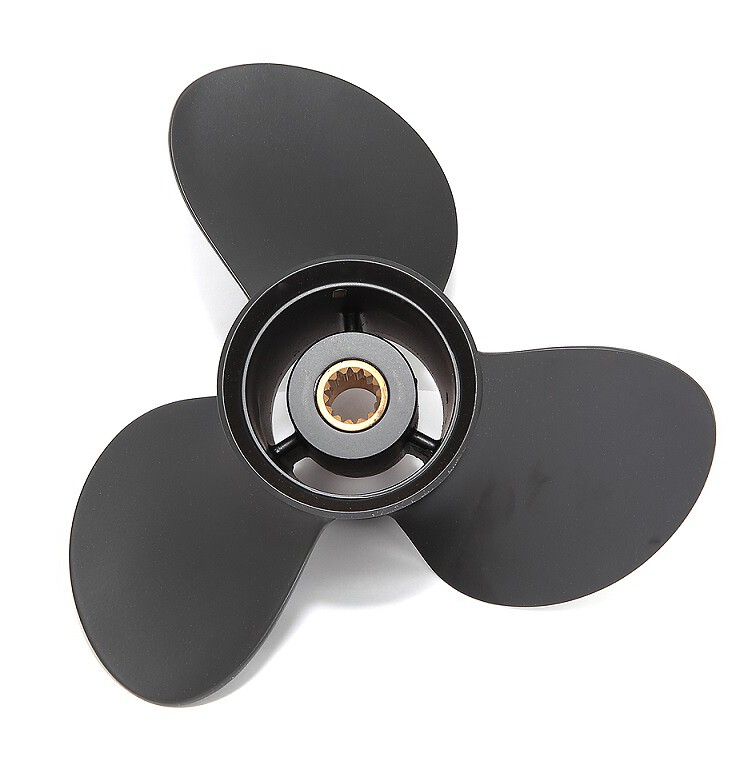
Aluminum propellers are some of the most popular because they are inexpensive, lightweight, and easy to repair or replace if they become damaged.
Because aluminum is so lightweight, these props are easy to install and exceptionally fuel-efficient.
That said, aluminum props are not as strong as those made of the other materials discussed in this section. For this reason, they are best-suited for small to medium sized boats and boat engines.
They are also a good choice if you often fish in shallow waters or areas where grounding or debris entanglement is likely. This is because you wouldn’t want to risk damaging more expensive props in these water conditions.
8. Stainless Steel Props

Stainless steel propellers are also quite popular. They are heavier than aluminum props, but they are also much stronger and more durable.
They are an excellent choice for large, heavy boats, or for those that frequently end up in harsh water conditions. They are also good if you like to travel at high speeds.
Due to their heavy weight, they are not as fuel-efficient as aluminum propellers, and they may not be appropriate for small boats or engines.
9. Bronze Props
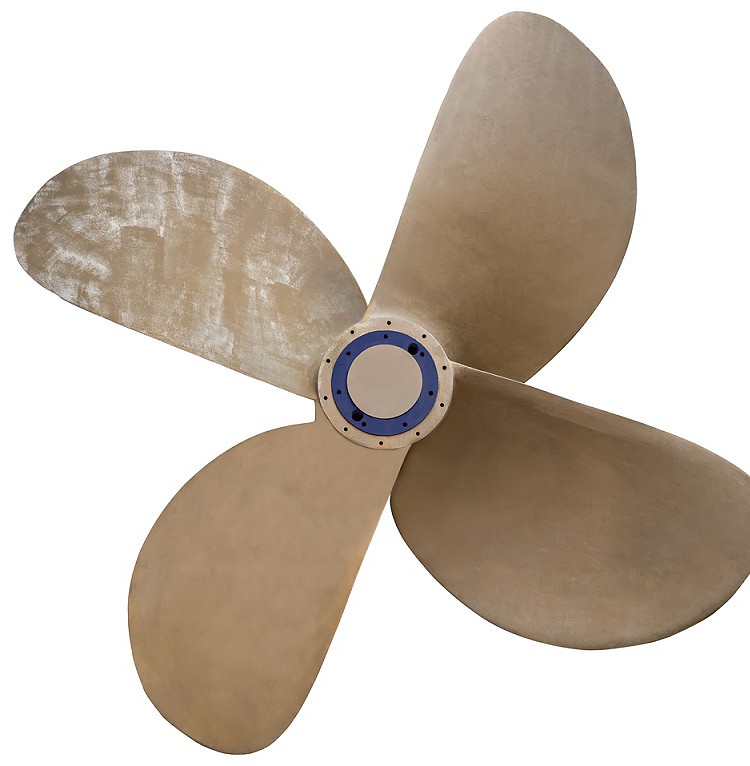
Bronze propellers are a little less common than those made of aluminum or stainless steel, but they are exceptionally strong and resistant to corrosion. They are most often used with inboard engines.
Due to their corrosion resistance, they are also a great choice for anyone who spends a lot of time boating in saltwater.
Bronze is strong and durable, allowing propellers made of this material to resist damage from flexing or impacts.
Bronze propellers are typically the most expensive type of prop, and they can also be costly to repair if they become damaged.
10. Nibral Props

Finally, many propellers are made of an alloy known as nibral. This material is created by blending nickel, bronze, and aluminum. The result is an impressively durable metal that resists corrosion and impact damage.
Nibral props are common on inboard and sterndrive engines. They perform exceptionally well in saltwater thanks to their corrosion-resistance.
They are larger and heavier than aluminum propellers, making them a good choice for larger, heavier boats. They are also a bit more costly than aluminum.
That said, they are still relatively inexpensive, making them a good choice for recreational boaters and anglers looking to upgrade their cheap aluminum prop to a stronger, more durable option.

Sarah Hood has been writing for Anchor Travel since 2021. When she’s not writing, she enjoys cooking, singing, and spending time in the great outdoors.

